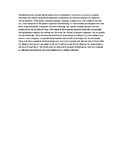| dc.description.abstract | Methodical issues in assessing the productivity or hartebeest (Alcelaphus buselaphus) in game ranching were studied using the demographic components of a livestock productivity model for microcomputers. Three game cropping strategies, trapping, culling by size, and culling by size and sex, were compared to the pattern typical of stockbreeding, in which animals are disposed of on the basis of age thresholds. Compared with stock breeding, the 3 game cropping regimes were less productive by 26, 21 and 14% resp. With regard to the expected regrowth time after an assumed 50% population collapse, the ranking was the same (39, 35 and 33 months compared with 30 months for stockbreeding). Static and dynamic productivity assessments of culling by size and culling by size and sex were compared. A hypothetical foundation herd at 50% of its target size was developed freely and then cropped to maintain target size. Over a 10-yr period, the internal rate of return (IRR) of culling by size and sex was higher by 49-247% relative to the IRR of culling by size, depending on the level of input flows. The results point to traits and techniques facilitating sex-selective cropping as important determinants of overall productivity in wildlife utilisation. | en_US |

